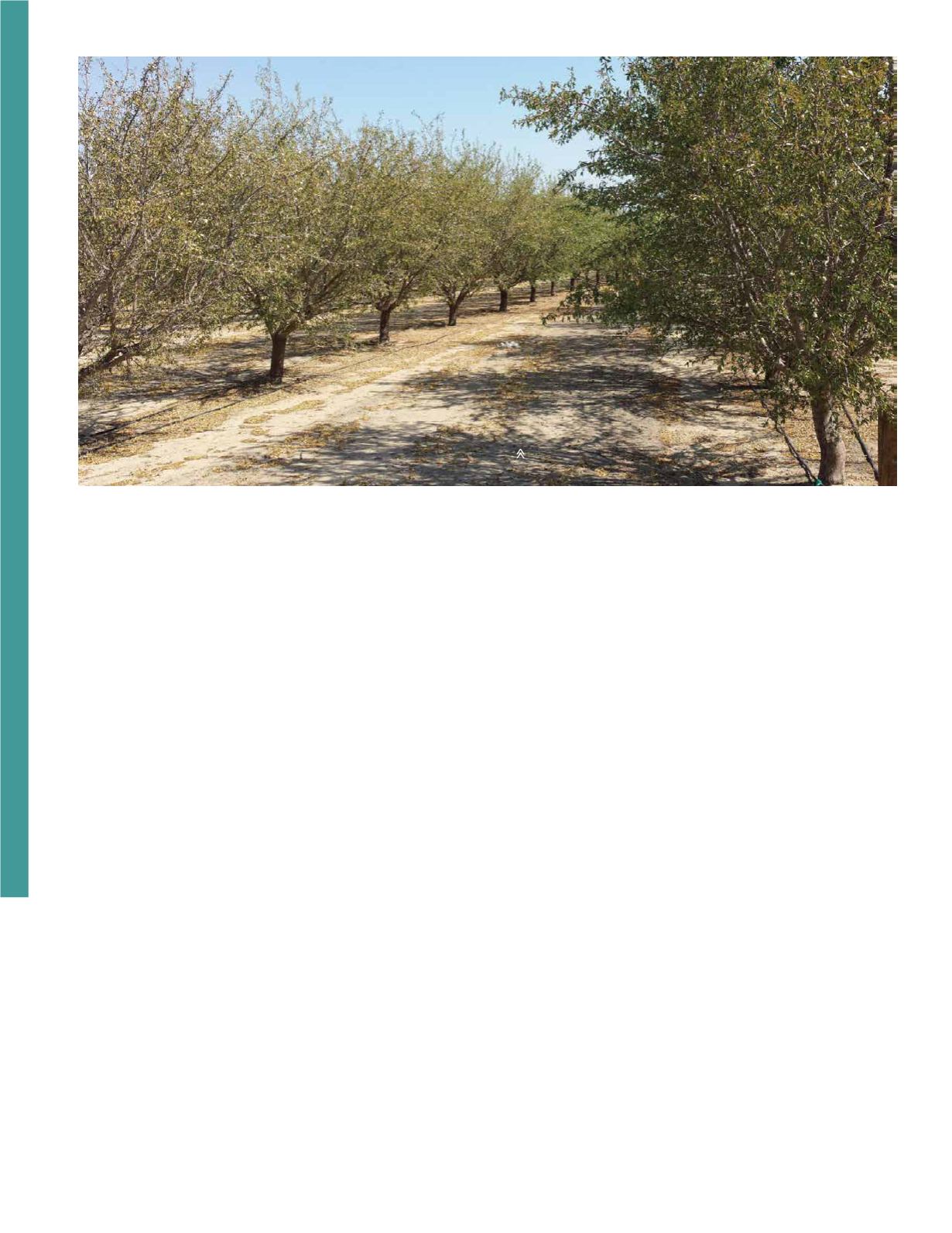
44
Almond Facts
MARCH | APRIL 2015
TIME TO CONSIDER
Trees undergoing severe water stress will drop leaves to reduce
water consumption. Photo courtesy of S. Vasquez.
Reduce Nitrogen Applications
Nitrogen applications should be reduced during periods
of drought. The reduction rate should be proportional
to the expected reduction in yield from deficit irrigation.
Nitrogen rates in the spring should be reduced to prevent
growth, as excessive vegetative growth increases tree
water demand. Most data suggest that long-term yield
reductions generally follow a 1:1 relationship with
long-term water reductions, meaning that a 30 percent
reduction in relative applied water leads to a 30 percent
reduction in relative yield.
Pest Management Considerations
Periods of drought influence insect pest populations.
Mites flare on stressed trees, and increased miticide
applications may be needed. Navel orangeworm (NOW)
populations are impacted by drought as well. Reduced
winter rains can make it difficult to remove mummies
with winter shaking, leading to an increase in the over-
wintering population. Warmer temperatures common
during drought years lead to faster insect development.
Furthermore, hull split is generally accelerated in drought
years, which changes the timing to apply a hull split
NOW spray.
Spring-time Nitrogen
Management
Nitrogen applications tend to begin in mid to late March
for many operations. New nitrogen regulations require
a crop estimate in order to determine the seasonal
amount of nitrogen to apply. Crop removal studies have
indicated that around 65 pounds of nitrogen are removed
with every 1,000 kernel pounds of harvest. Taking into
account nitrogen application inefficiencies, 85 pounds of
nitrogen must be applied to replace the removed amount.
Further research has indicated that multiple applications
of nitrogen should be made through the season with
80 percent of the total budget being applied prior to
kernel fill with the remaining 20 percent applied in the
postharvest. Spring applications should be split to reduce
the potential of plant toxicity and leaching from spring
rains or over-irrigation. A good plan for a sandy loam or
finer soil would be 20-30-30-20 for mid-March, mid-
April, mid-May, and the postharvest period, respectively.
In coarser or soils with lower water holding capacities,
smaller, more frequent applications should be applied.
Keep in mind that if reducing water applications due to
drought, nitrogen applications should also be reduced.
Pest and disease considerations
for March/April
Disease concerns tend to run high in the spring as rains
may provide environmental conditions conducive for
infection. Sprays for shot-hole, anthracnose, jacket rot
and bacterial spot should be based on rainfall events.
Summer diseases of rust and scab, however, may still
be problematic and may require a treatment even in
dry spring conditions. Treatment timings for scab is 2-5
weeks post petal fall, and 5 weeks post petal fall or later


